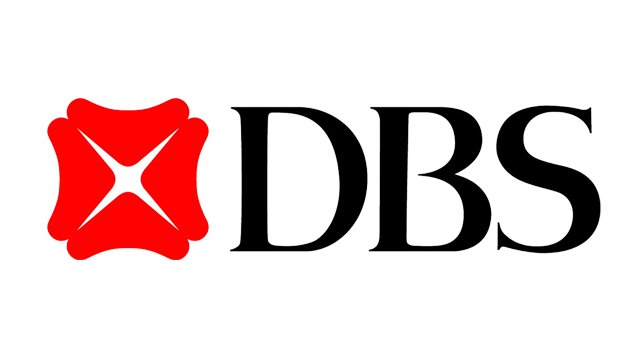
The Positives
+ NII up 17% YoY. NII grew 17% YoY to S$2.5bn due to NIM increase of 13bps YoY to 1.53% and continued loan growth of 7% YoY. Loan growth was driven by trade and corporate non-trade loans, while housing loans and wealth management loans were little changed. NIM improvement was mainly due to the rising interest rates as the impact of interest rate hikes was more fully felt. Management has lifted NIM guidance to 1.70-1.75% for FY22e (from 1.58-1.60%).
+ Asset quality stable; 2Q22 allowances at S$46mn. 2Q22 total allowances were lower YoY and QoQ due to lower SPs of S$69mn for the quarter (S$167mn in 1Q22). Further, credit costs improved by 6bps YoY to 8bps. The GP write-back of S$23mn for 2Q22 was from credit upgrades and transfers to NPA. GP reserves remained prudent at S$3.74bn, with NPA reserves at 113% and unsecured NPA reserves at 199%. The NPL ratio was maintained at 1.3% as new NPA formation remained low.
+ Loan growth up 7%; deposits up 9% YoY in 2Q22. Loans grew 7% YoY and 1% QoQ to S$425bn. This was mainly driven by trade and corporate non-trade loans. Housing and WM loan growth was sustained at the previous quarter’s levels. Management lowered its FY22e loan growth guidance to mid-single digit (from mid to high-single digit). Deposits grew 9% YoY and 1% QoQ to S$528bn, and current and savings accounts (CASA) accounted for 72% of customer deposits.
The Negative
– Fee income fell 12% YoY. The fee income decline YoY was mainly due to weaker market sentiment affecting wealth management and investment banking. WM fees fell 21% YoY to S$337mn as market conditions further weakened during the quarter. Investment banking fees fell by 54% YoY to S$30mn alongside a slowdown in capital market activities. Nonetheless, card fees improved 23% YoY to S$203mn as borders start to reopen and spending increased, while loan-related fees moderated from record levels. Other non-interest income fell 10% due to less favourable market opportunities.
Outlook
Business momentum is strong: Despite economic uncertainties from macroeconomic factors such as slower growth, higher inflation and supply chain disruptions, loans and transaction pipelines are expected to be strong. Management said that stress tests of vulnerable sectors and countries reveal no imminent areas of concern.
GP reserves sufficient: With its capital position and liquidity well above regulatory requirements and high allowance reserves, we believe the bank has sufficient provisions to ride out current economic uncertainties. The CET-1 ratio improved 0.2% QoQ to 14.2% and is at the upper end of DBS’ target operating range. 2Q22 DPS is raised 9% YoY to 36 cents.
Upside from higher rates: Management said that it expects to end 2022 with an exit NIM of 2.0%. DBS said that a 1 bps rise in interest rates could raise NII by $18mn-20mn (or NII sensitivity of 2% for every 10bps). Assuming hikes of 100bps this year, our FY22e NII can climb S$2bn (or 21%) resulting in an increase in our FY22e PATMI by 26%.
Important Information
This report is prepared and/or distributed by Phillip Securities Research Pte Ltd ("Phillip Securities Research"), which is a holder of a financial adviser’s licence under the Financial Advisers Act, Chapter 110 in Singapore.
By receiving or reading this report, you agree to be bound by the terms and limitations set out below. Any failure to comply with these terms and limitations may constitute a violation of law. This report has been provided to you for personal use only and shall not be reproduced, distributed or published by you in whole or in part, for any purpose. If you have received this report by mistake, please delete or destroy it, and notify the sender immediately.
The information and any analysis, forecasts, projections, expectations and opinions (collectively, the “Research”) contained in this report has been obtained from public sources which Phillip Securities Research believes to be reliable. However, Phillip Securities Research does not make any representation or warranty, express or implied that such information or Research is accurate, complete or appropriate or should be relied upon as such. Any such information or Research contained in this report is subject to change, and Phillip Securities Research shall not have any responsibility to maintain or update the information or Research made available or to supply any corrections, updates or releases in connection therewith.
Any opinions, forecasts, assumptions, estimates, valuations and prices contained in this report are as of the date indicated and are subject to change at any time without prior notice. Past performance of any product referred to in this report is not indicative of future results.
This report does not constitute, and should not be used as a substitute for, tax, legal or investment advice. This report should not be relied upon exclusively or as authoritative, without further being subject to the recipient’s own independent verification and exercise of judgment. The fact that this report has been made available constitutes neither a recommendation to enter into a particular transaction, nor a representation that any product described in this report is suitable or appropriate for the recipient. Recipients should be aware that many of the products, which may be described in this report involve significant risks and may not be suitable for all investors, and that any decision to enter into transactions involving such products should not be made, unless all such risks are understood and an independent determination has been made that such transactions would be appropriate. Any discussion of the risks contained herein with respect to any product should not be considered to be a disclosure of all risks or a complete discussion of such risks.
Nothing in this report shall be construed to be an offer or solicitation for the purchase or sale of any product. Any decision to purchase any product mentioned in this report should take into account existing public information, including any registered prospectus in respect of such product.
Phillip Securities Research, or persons associated with or connected to Phillip Securities Research, including but not limited to its officers, directors, employees or persons involved in the issuance of this report, may provide an array of financial services to a large number of corporations in Singapore and worldwide, including but not limited to commercial / investment banking activities (including sponsorship, financial advisory or underwriting activities), brokerage or securities trading activities. Phillip Securities Research, or persons associated with or connected to Phillip Securities Research, including but not limited to its officers, directors, employees or persons involved in the issuance of this report, may have participated in or invested in transactions with the issuer(s) of the securities mentioned in this report, and may have performed services for or solicited business from such issuers. Additionally, Phillip Securities Research, or persons associated with or connected to Phillip Securities Research, including but not limited to its officers, directors, employees or persons involved in the issuance of this report, may have provided advice or investment services to such companies and investments or related investments, as may be mentioned in this report.
Phillip Securities Research or persons associated with or connected to Phillip Securities Research, including but not limited to its officers, directors, employees or persons involved in the issuance of this report may, from time to time maintain a long or short position in securities referred to herein, or in related futures or options, purchase or sell, make a market in, or engage in any other transaction involving such securities, and earn brokerage or other compensation in respect of the foregoing. Investments will be denominated in various currencies including US dollars and Euro and thus will be subject to any fluctuation in exchange rates between US dollars and Euro or foreign currencies and the currency of your own jurisdiction. Such fluctuations may have an adverse effect on the value, price or income return of the investment.
To the extent permitted by law, Phillip Securities Research, or persons associated with or connected to Phillip Securities Research, including but not limited to its officers, directors, employees or persons involved in the issuance of this report, may at any time engage in any of the above activities as set out above or otherwise hold an interest, whether material or not, in respect of companies and investments or related investments, which may be mentioned in this report. Accordingly, information may be available to Phillip Securities Research, or persons associated with or connected to Phillip Securities Research, including but not limited to its officers, directors, employees or persons involved in the issuance of this report, which is not reflected in this report, and Phillip Securities Research, or persons associated with or connected to Phillip Securities Research, including but not limited to its officers, directors, employees or persons involved in the issuance of this report, may, to the extent permitted by law, have acted upon or used the information prior to or immediately following its publication. Phillip Securities Research, or persons associated with or connected to Phillip Securities Research, including but not limited its officers, directors, employees or persons involved in the issuance of this report, may have issued other material that is inconsistent with, or reach different conclusions from, the contents of this report.
The information, tools and material presented herein are not directed, intended for distribution to or use by, any person or entity in any jurisdiction or country where such distribution, publication, availability or use would be contrary to the applicable law or regulation or which would subject Phillip Securities Research to any registration or licensing or other requirement, or penalty for contravention of such requirements within such jurisdiction.
This report is intended for general circulation only and does not take into account the specific investment objectives, financial situation or particular needs of any particular person. The products mentioned in this report may not be suitable for all investors and a person receiving or reading this report should seek advice from a professional and financial adviser regarding the legal, business, financial, tax and other aspects including the suitability of such products, taking into account the specific investment objectives, financial situation or particular needs of that person, before making a commitment to invest in any of such products.
This report is not intended for distribution, publication to or use by any person in any jurisdiction outside of Singapore or any other jurisdiction as Phillip Securities Research may determine in its absolute discretion.
IMPORTANT DISCLOSURES FOR INCLUDED RESEARCH ANALYSES OR REPORTS OF FOREIGN RESEARCH HOUSE
Where the report contains research analyses or reports from a foreign research house, please note:

Glenn covers the Banking and Finance sector. He has had 3 years of experience as a Credit Analyst in a Bank, where he prepared credit proposals by conducting consistent critical analysis on the business, market, country and financial information. Glenn graduated with a Bachelor of Business Management from the University of Queensland with a double major in International Business and Human Resources.